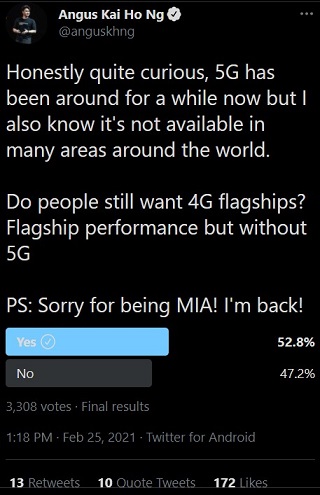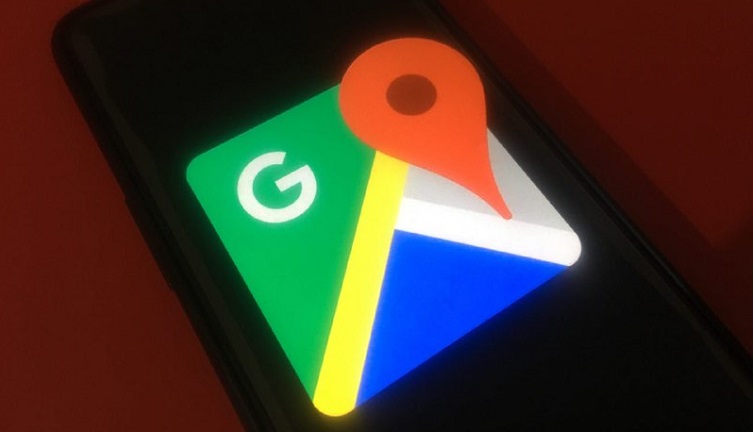Time for a poll!
— PiunikaWeb (@PiunikaWeb) March 7, 2021
Do you think it's still too early to go for a 5G smartphone?
Vote below and read our opinion here: https://t.co/yosL6IzmR0#Google #Apple #Smartphones #4G #5G #5gsmartphone #ATT #Tmobile #Verizon #Huawei #LG #Samsung #OnePlus #Xiaomi #poll #opinion #OpinionPoll
New updates are being added to the bottom of the story…
Original story (from March 07, 2021) follows:
Xiaomi’s Redmi Note series can easily be considered as the benchmark of value-for-money and with the Note 10 family, the company has just raised the bar.
The 120Hz AMOLED display and 108MP camera are easily the major highlights of the Redmi Note 10 series — so much so that it’s easy to notice that one vital feature is missing, 5G support.
When 5G debuted in late 2018 on AT&T, Verizon joined the party in April 2019 and T-Mobile went nationwide in December 2019, many of us thought the flashy technology would be available to most people by 2021.

Sure, in these early days, only a handful of cities had access to spotty 5G — and that too only in limited sections of these cities. No doubt that 2020 saw significant 5G expansion across the U.S, Europe and Asia.
But due to the restrictions and economic impact of the COVID-19 pandemic, the expansion didn’t go as many carriers would have wanted it to. Granted, there is still a long way to go for 5G to reach the scales of 4G today.
In fact, I’d argue that some of the reasons put forward against buying 5G smartphones in favor of 4G sets a year ago still hold to date, compatibility issues — and even price — among them.
5G still needs some more time to mature
We are now two smartphone generations into the 5G era. The first phones came in at a pretty penny but things have started normalizing, with plenty of sub-$500 options now available on the market.
But even so, 5G still needs some more time to mature, you know, just like with everything else. There might be some affordable 5G handsets on the market, but with no proper infrastructure in place, you’ll still be using 4G network.
Carriers all over the world are still expanding 5G coverage to more cities in their respective countries. But even with their efforts, only a fraction of the markets are covered in 5G.
Up until last year, many carriers that deployed 5G only did it to get on the hype train of being first. Initial efforts saw the deployment of “advanced 4G”, but in 2020, true 5G (millimeter wave) started becoming mainstream.
So far, Verizon users can access the super-fast millimeter wave 5G network in over 60 U.S. cities while AT&T has it in parts of 36 cities. T-Mobile, on the other hand, has true 5G in parts of six cities.
In comparison, the three carriers have nationwide 4G LTE coverage of 70%, 68% and 62%, respectively. That said, there’s plenty of work to do to reach the same coverage that 4G has today.
And the story is pretty much the same in other countries like the UK, China, Korea, Germany, and Australia. But the same cannot be said of regions in 2nd and 3rd world economic belts.
If anything, in parts of Europe, Asia and especially Africa where 3G is still heavily in use, it could take several years before carriers are able to expand 5G coverage to most, not all, parts of these countries.
Granted, buying a smartphone whose major selling point is 5G support at this point in time in these regions, be it a premium or budget set, is pretty much useless.
5G smartphones on a budget
At first, getting hands on a 5G phone was quite expensive. But in 2021, vendors are churning out new devices that are compatible with multiple 5G networks at affordable prices.
The reason we have sub-$250 5G phones today is that chipset makers trickled down the tech to accommodate the lower-end models, but as you’d expect, this move comes at a price, at least for end users.
No doubt even the sub-$250 5G phones are great pieces of hardware, but OEMs are always cutting corners in order to hit this sweet spot. Take the recently launched Redmi Note 10 series, for instance.
The 4G Redmi Note 10 and the 5G Note 10 are both priced at $199 and $229 for the 4/64GB and 4/128GB variants. So, why the same price when one offers the latest 5G technology? Aren’t 5G phones pricier?
Well, for starters, it’s true that 5G phones are pricier than their 4G counterparts for the obvious reason of having extra paid-for 5G hardware that is not needed in a 4G phone at this point.
But in order to arrive at the same $199 price tag as its 4G counterpart, Xiaomi had to cut a few corners on the 5G model. For instance, it swaps the AMOLED panel for an LCD panel.
Unlike the 4G Note 10 that peaks at a brightness of 1,100nits, the 5G model only manages 500nits. Design-wise, it also misses out on IP53 rating, Hi-Res dual stereo speakers, and Z-axis vibration motor.
It doesn’t end there, though, as the Note 10 5G also misses out on quad-lens main camera and instead gets a triple camera setup and also supports 18W wired fast charging while the rest get 33W fast charging.
These are some of the corners Xiaomi had to cut in order to price the 5G Redmi Note 10 at the same $199 as the 4G Note 10. Now, imagine how many similar corners other vendors cut just to give you a 5G phone on the budget.
The question potential Redmi Note 10 5G buyers should be asking is whether sacrifices made to hit the $199 price tag are worth it, especially knowing that 5G coverage in most target markets is pretty much non-existent.
A 4G flagship smartphone at the right price
Due to market trends, 5G phones will attract higher prices than 4G phones. Granted, the amount of 4G phone you get when you spend $500 isn’t the same amount of 5G phone you’ll end up with for the same price.
The Redmi Note 10 example above just gave us an idea of that. And given that it won’t be another couple or more years before 5G coverage becomes mainstream in countries like India, maybe you should still consider a 4G smartphone with flagship performance in 2021.
Make no mistake, having a 5G phone right now means you are future-proof. But in order to get your hands on the best hardware, you’ll have to part with some cool money.
If you intend to keep the phone for 3 or even 4 years, then buying a 5G phone right now is a no-brainer. But for those who hardly keep phones for a year or two, splashing on a 5G phone today is not necessary.
Instead, you can spend the same amount on a decent, powerful 4G smartphone and replace it with a 5G set in due time, when coverage becomes stable in most parts, something a good number of Xiaomi fans agree.

The only major downside of buying any form of 4G phone today is that it won’t have a decent resale value a year or so down the line since the market will be flooded by even more affordable 5G options.
However, for those of us who prefer performance to latest trends or gimmicks for that matter (yeah, 5G is still mostly a gimmick at this point), investing in a premium 4G smartphone today is still worth the shot.
Share with us your take by voting below.
Update 1 (March 14)
And our readers have spoken. While 52.5% of those who voted believe it’s still too early to go for a 5G smartphone, 27.1% say that’s not the case. About 6.8% are still confused and 13.6% are disinterested in a 5G unit.
PiunikaWeb started as purely an investigative tech journalism website with main focus on ‘breaking’ or ‘exclusive’ news. In no time, our stories got picked up by the likes of Forbes, Foxnews, Gizmodo, TechCrunch, Engadget, The Verge, Macrumors, and many others. Want to know more about us? Head here.

![[Poll results out] Here's why I'd still prefer a 4G smartphone (over 5G) with flagship performance in 2021 [Poll results out] Here's why I'd still prefer a 4G smartphone (over 5G) with flagship performance in 2021](https://stage.onepluscorner.com/wp-content/uploads/2021/03/Samsung-Galaxy-S21-5G.jpg)
